Fried fish is universally delectable, and if you just can’t seem to get it right at home, the oil might be the culprit. When choosing the best oil for frying fish, you’ll need to pay attention to some important factors. The frying method and the type of fish also matter, so keep reading to find out how to make the perfect fried fish!
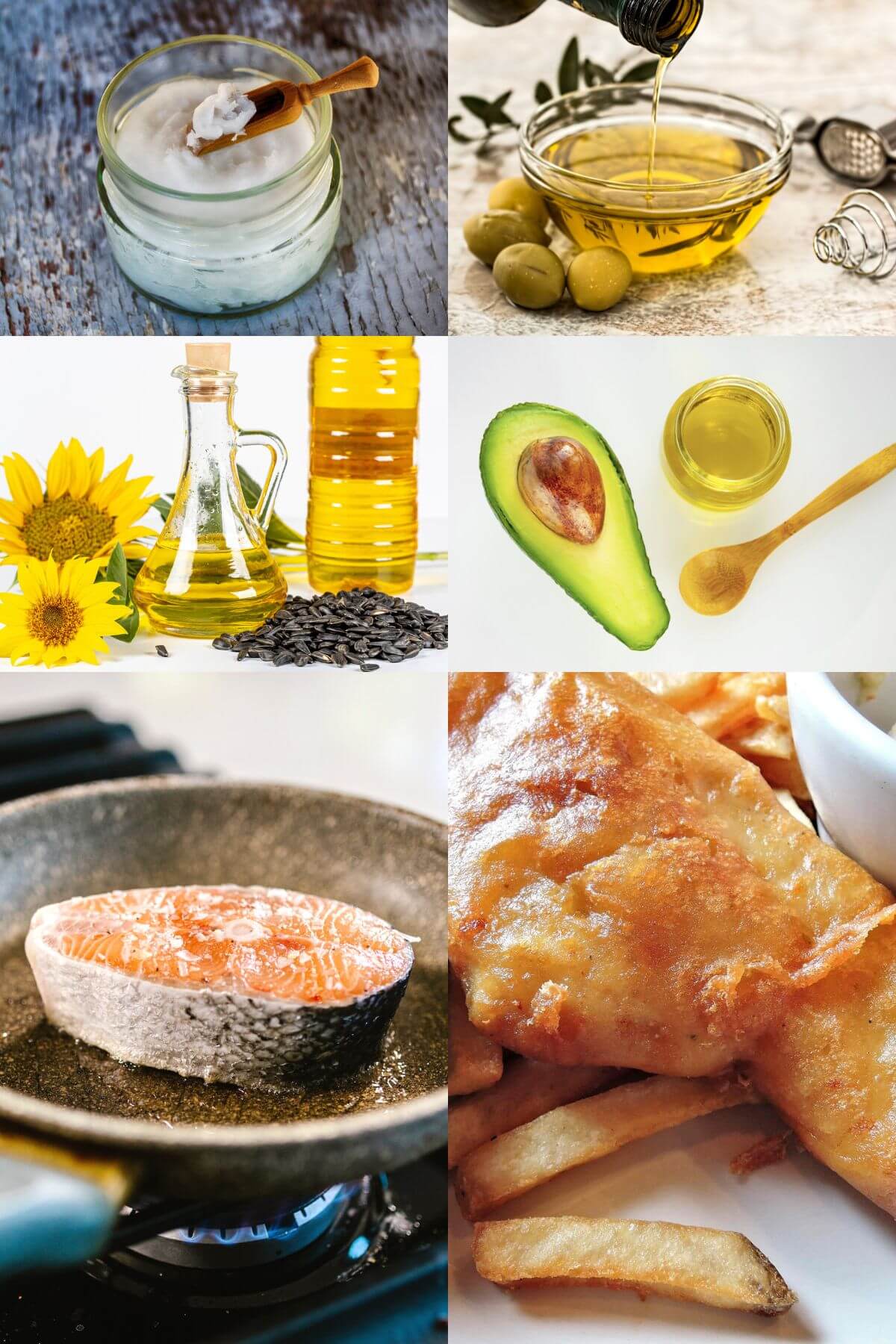
Fish and chips are served in restaurants, pubs, and fast-food joints all over the world, although there are so many other fried fish recipes to try.
You can definitely make excellent fish and chips at home, as well as use shallower frying methods for delicate fish meats once you learn how to choose the right cooking oil.
🐟 What To Look For
Frying means food is exposed to high heat and you’ll need an oil capable of withstanding the temperatures needed for this cooking method.
Other important factors you shouldn’t ignore are the flavor of the oil and if it absorbs the flavors of the food as it’s frying, since that can make it unfit for reuse.
Smoke Point
Deep frying requires temperatures between 350 to 375°F, so the oil you’re using should have a higher smoke point.
When an oil reaches its smoke point, it starts to oxidize and, during this process, harmful compounds are released. This can also give food a burnt, bitter flavor.
Fried fish might not be the healthiest dish, but there’s no need to add burnt oil to the mix. For deep frying, we recommend choosing an oil with a smoke point of at least 400°F.
Flavor
Fish has mild flavors, and that’s why you should fry it in a neutral or light flavored oil that won’t affect the taste of the fish or the seasonings you used.
The oil used for frying should simply make your fish crispy, and it should taste like fish even if it’s fried.
Flavor Transfer
It’s not recommended to fry other foods in oil that was previously used to fry fish or seafood.
Using an oil that doesn’t absorb the flavor of the food cooked in it will at least allow you to reuse it for frying another type of fish.
Refined Or Unrefined
Unrefined oils are the healthiest, but they’re also more expensive, have stronger flavors, and lower smoke points compared to refined varieties.
This makes them less suitable for frying in general, and also for frying fish since its delicate flavor can be easily overpowered.
With much higher smoke points, refined oils won’t oxidize as quickly and their original taste is maintained throughout the frying process.
Refined oils typically have neutral or very mild flavors and that’s exactly what you need for frying fish.
Some nutrients are lost in the refining process, although there’s another potential issue you need to look out for. Many of them are produced from GMO crops, which are sprayed with toxic fertilizers and pesticides.
Be sure to check the label and list of ingredients for information regarding the source of the plants and any potentially unhealthy substances.
🥘 Pan Frying vs. Frying vs. Deep Frying
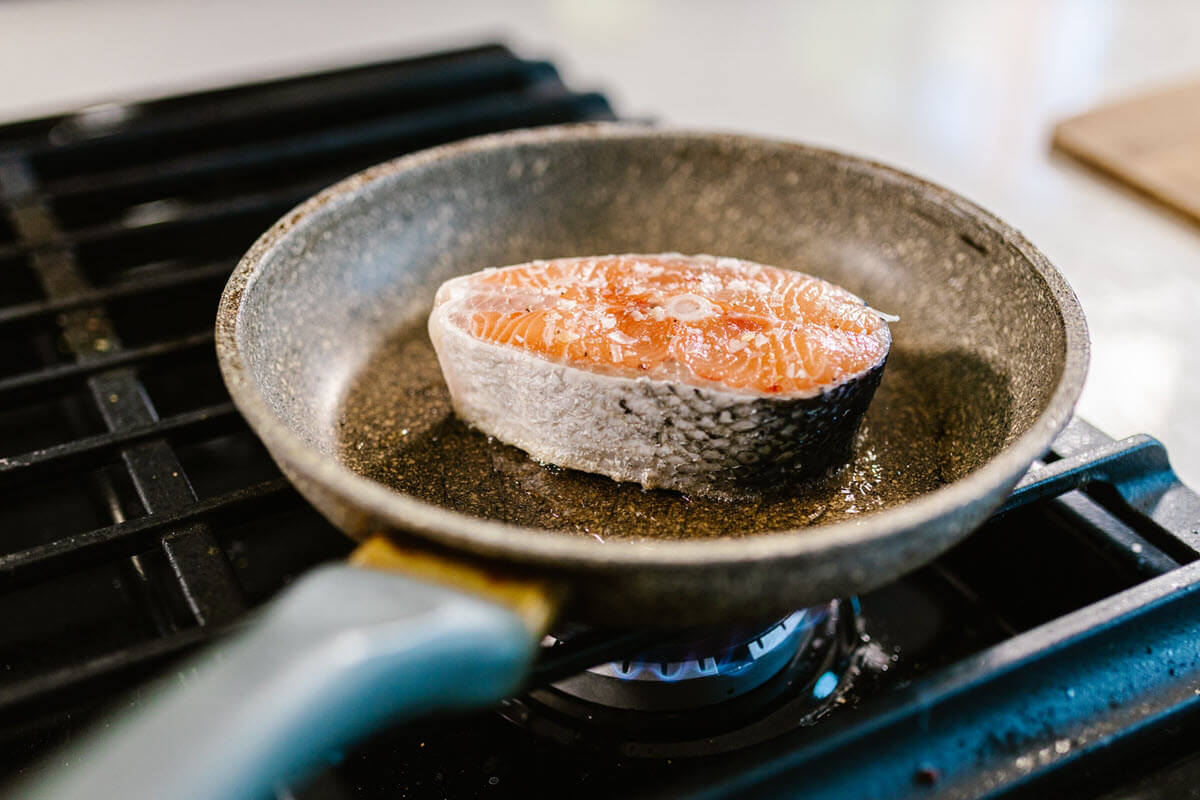
Depending on the amount of oil you use, there are actually three main ways to fry fish (or any other food): pan frying, frying, and deep-frying.
Pan-frying, also known as sautéing, means searing food in a small amount of oil over high heat.
In fact, this technique works amazingly well for white mild fish and we had great results for our grilled pan-seared lingcod, grilled sheepshead, and grilled, blackened dover sole.
Frying and deep-frying are similar, but they use a different amount of oil: when frying, only half the food is covered in oil. For deep-frying, the food is fully submerged in hot oil.
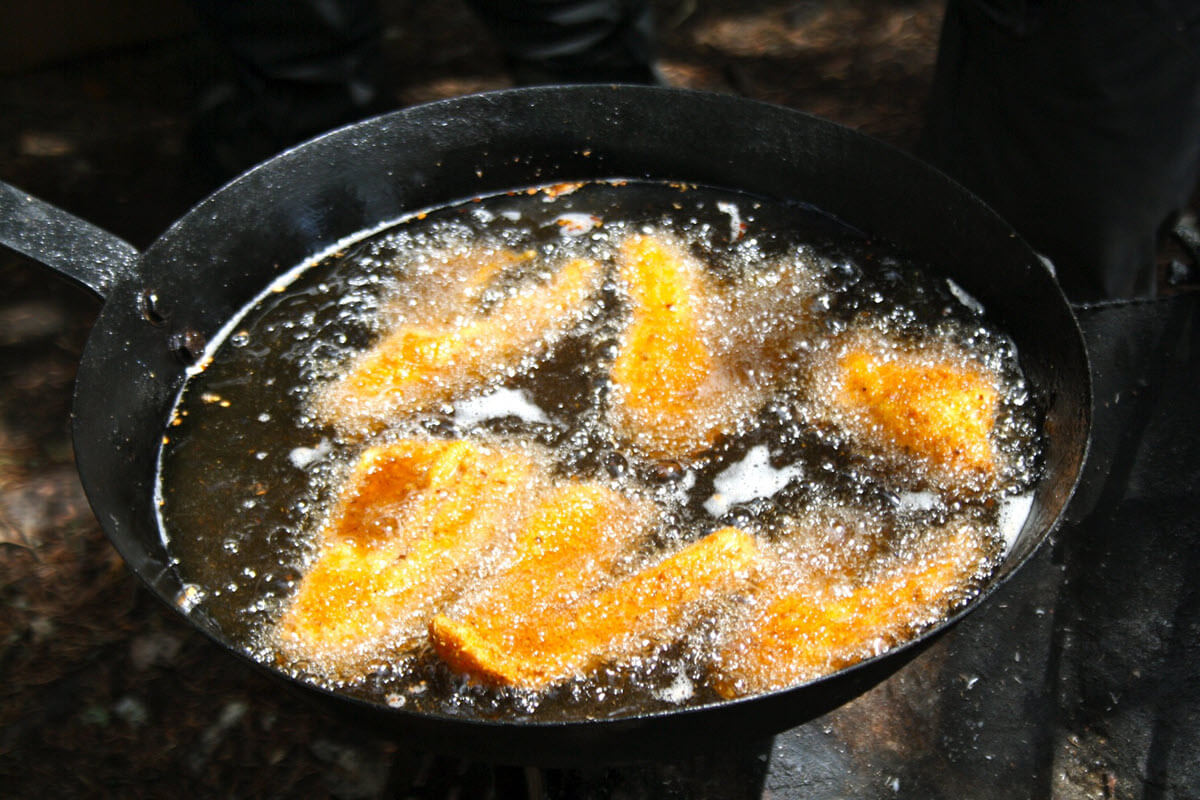
For frying and deep-frying fish, it’s a good idea to aim for a high smoke point, neutral flavor, and acceptable price tag. You’ll be using a larger quantity of oil, which adds up to the total cost of your meal.
Since pan-frying uses very little oil, you can get away with using a more expensive oil, such as avocado oil. Avocado oil has an exceptionally high smoke point of 520 °F, so technically, it’s perfect for any kind of frying.
It’s also pricier than most cooking oils, so you might want to use it for shallow frying purposes only.
Best Oils For Frying Fish
Whatever your grocery budget is, I’m sure you’ll find the perfect option below. Any of these oils are good for frying fish.
Some are better suited for pan-frying, while others for regular and deep frying and you’ll find that information listed for each!
Avocado oil

Refined avocado oil is one of the healthiest cooking oils and has a neutral flavor and very high smoke point.
You can use it for any cooking method and we’re listing it as most suitable for pan frying only because of the price tag.
Smoke point: 520°F (271°C)
Best for: Pan frying.
Canola oil
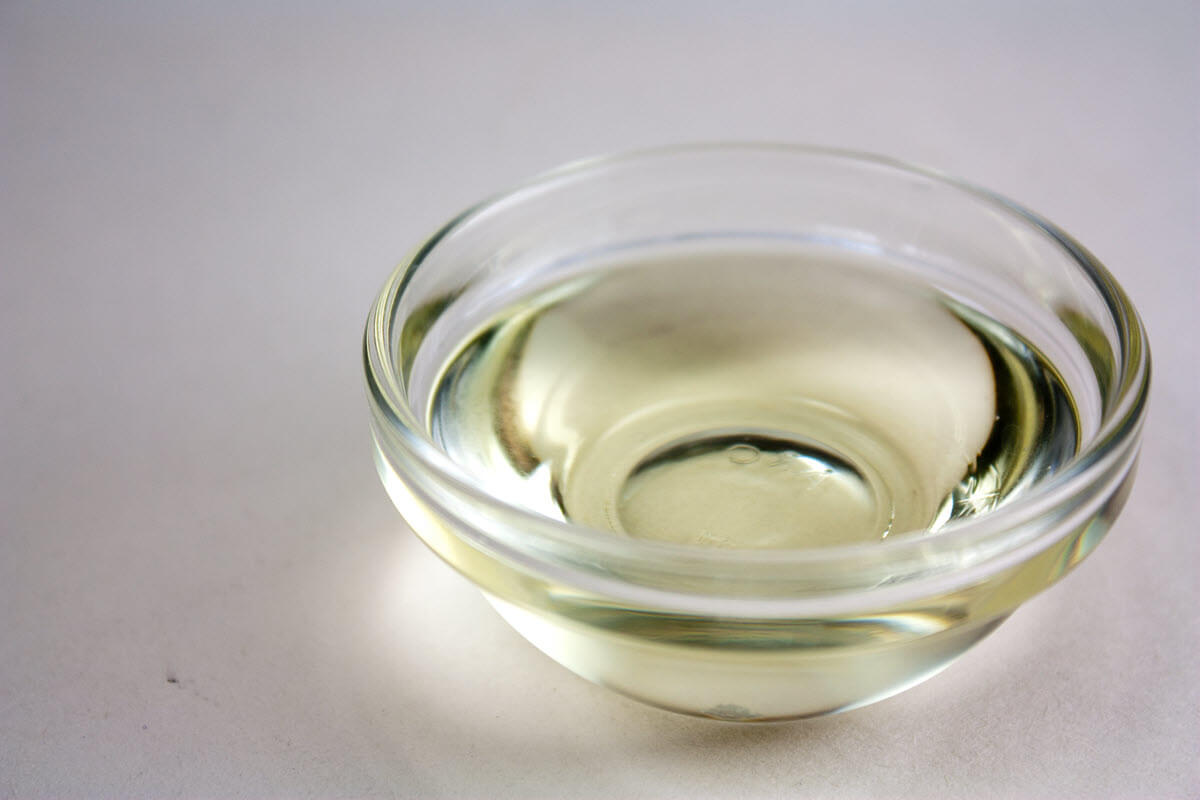
The refined oil made from the rapeseed plant is a very light oil that’s also cheap and easy to find.
Canola oil’s neutral taste and low price makes it perfect for deep frying fish as it won’t overpower the delicate flavor of fish meat.
Smoke point: 400°F (205 °C)
Best for: Pan frying, frying, and deep frying.
Corn oil
Corn oil is another oil that doesn’t affect the fish flavors or transfer them.
Whether you enjoy your fried fish plain, with just a little salt and pepper, or you prefer adding other seasonings, corn oil won’t interfere with the other ingredients.
It has an even higher smoke point than canola oil and also makes a budget-friendly choice.
Smoke point: 450°F (232 °C)
Best for: Pan frying, frying, and deep frying.
Vegetable oil
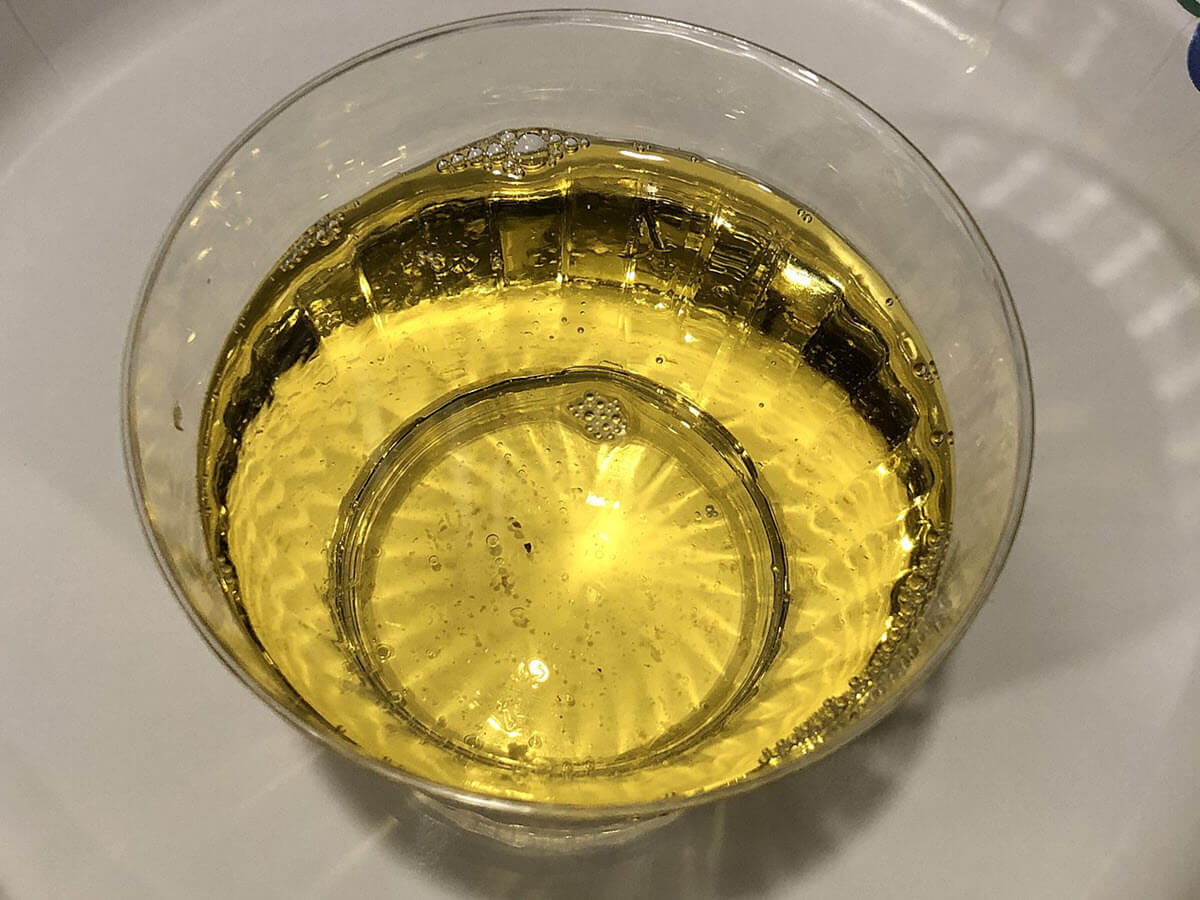
Vegetable oil is a blend of refined oils and can include canola oil, sunflower oil, palm oil, soybean oil, and others.
It’s very affordable, so if you don’t like reusing oil for frying, vegetable oil is an obvious choice.
Flavor-wise, it’s practically tasteless and odorless, plus the smoke point is around 400°F, just like canola oil.
Just to be on the safe side, check the label for the smoke point, to be sure it’s the kind suitable for frying.
Smoke point: 400°F (205 °C)
Best for: Pan frying, frying, and deep frying.
Safflower oil
Safflower oil is high in monounsaturated fats, and its smoke point is around 450 °F which lowers the chance of burning your fried fish.
It’s frugally priced and would work for any type of cuisine because of its neutral flavor profile.
Smoke point: 450°F (232 °C)
Best for: Pan frying, frying, and deep frying.
Sunflower oil

Sunflower oil is another refined oil with a light texture, neutral flavor and a decent price, which means you can use it even for deep frying fish.
In fact, it’s one of the most popular oils used for fish and chips, although you can deep fry pretty much any food in it.
Smoke point: 450°F (232 °C)
Best for: Pan frying, frying, and deep frying.
Grapeseed oil
Grapeseed oil is more natural and healthier compared to most refined oils. It has a very mild taste and a smoke point of 420 °F, making it a highly versatile cooking oil.
It can be used for a large variety of dishes, including fried fish recipes, the only drawback being its price.
Grapeseed oil is more expensive compared to popular cooking oils such as canola, sunflower, and vegetable oil.
While it’s not particularly cost-effective to use it for deep frying, you can definitely use it to saute fish!
Smoke point: 420°F (215 °C)
Best for: Pan frying.
Light Or Refined Olive Oil
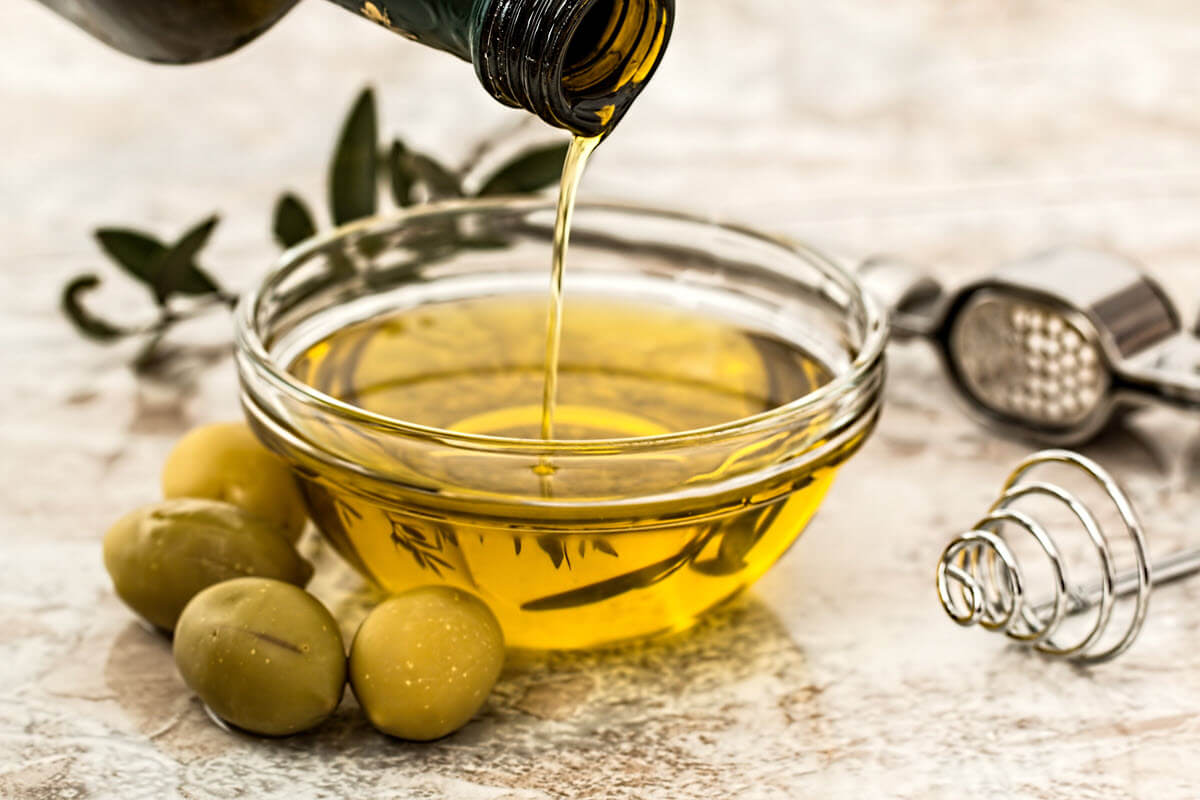
Light or refined olive oil has a light golden color and a subtler taste compared to virgin olive oil.
It’s refined, which means some nutrients are lost in the manufacturing process but it also has a higher smoke point than unrefined olive oil, the price being lower too.
With that said, refined olive oil is great for frying and the almost neutral taste means your fried fish will keep its original flavor.
Price-wise, it’s cheaper than virgin olive oil but more expensive than canola and other more popular cooking oils.
Smoke point: 465°F (240 °C)
Best for: Pan frying, frying, and deep frying.
Ghee
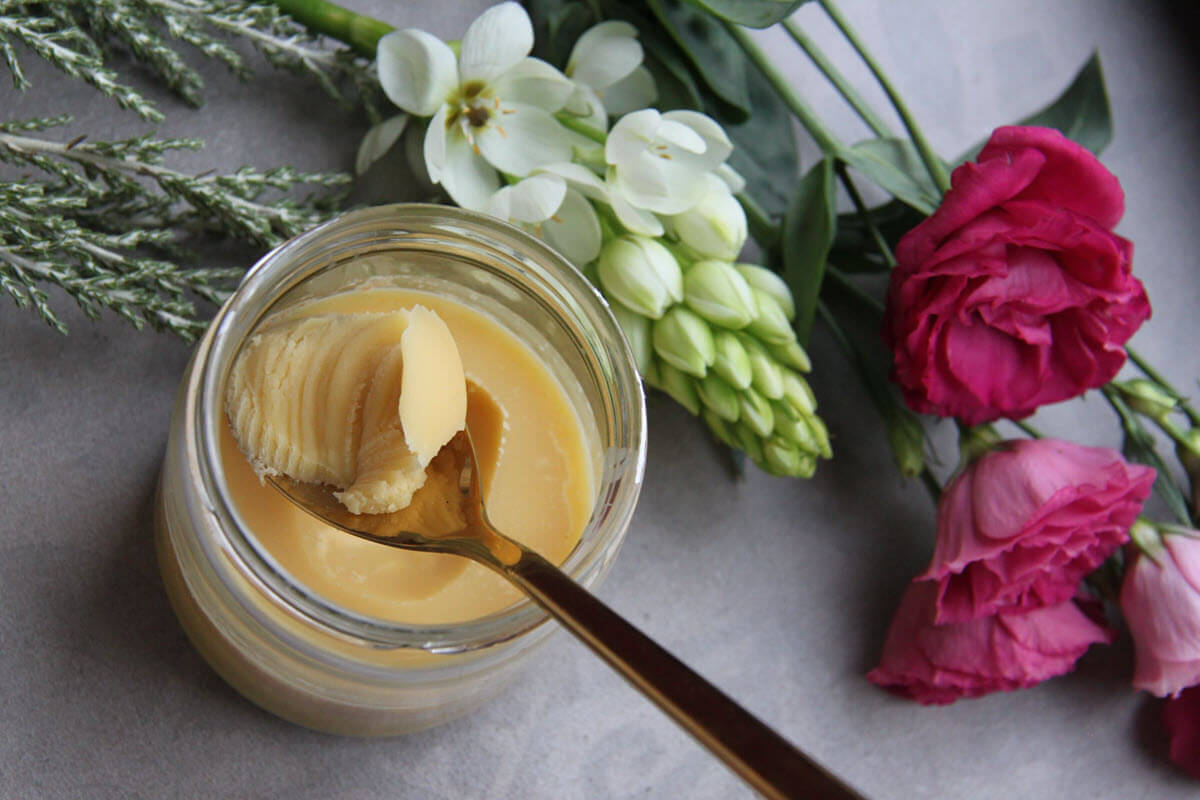
Ghee is the pure fat that remains after straining all the milk solids from butter.
It’s definitely not neutral in flavor, having a buttery and slightly nutty fragrance, but it can complement fish.
With a high smoke point, ghee is pricier than many alternatives on this list, which is why we recommend it mainly for pan frying.
Smoke point: 482°F (250 °C)
Best for: Pan frying.
Peanut oil
Peanut oil has a subtle nutty flavor, but it’s mild enough to be classified as neutral.
As long as you don’t mind the faint taste, it’s perfectly suitable for frying fish.
In fact, it used to be very popular as a deep frying oil because of its high smoke point. The only reason other oils have moved up the list of favorites is because of the rise in peanut allergies.
Smoke point: 450°F (232 °C)
Best for: Pan frying, frying, and deep frying.
Refined Coconut Oil

Refined coconut oil is not the most budget-friendly oil for deep frying but it is healthy and doesn’t transfer flavors, which means you can reuse it.
It has a long shelf life, a high smoke point and neutral taste that makes it perfect for practically any cooking method, including frying.
Smoke point: 400°F (205 °C)
Best for: Pan frying, and frying.
Lard
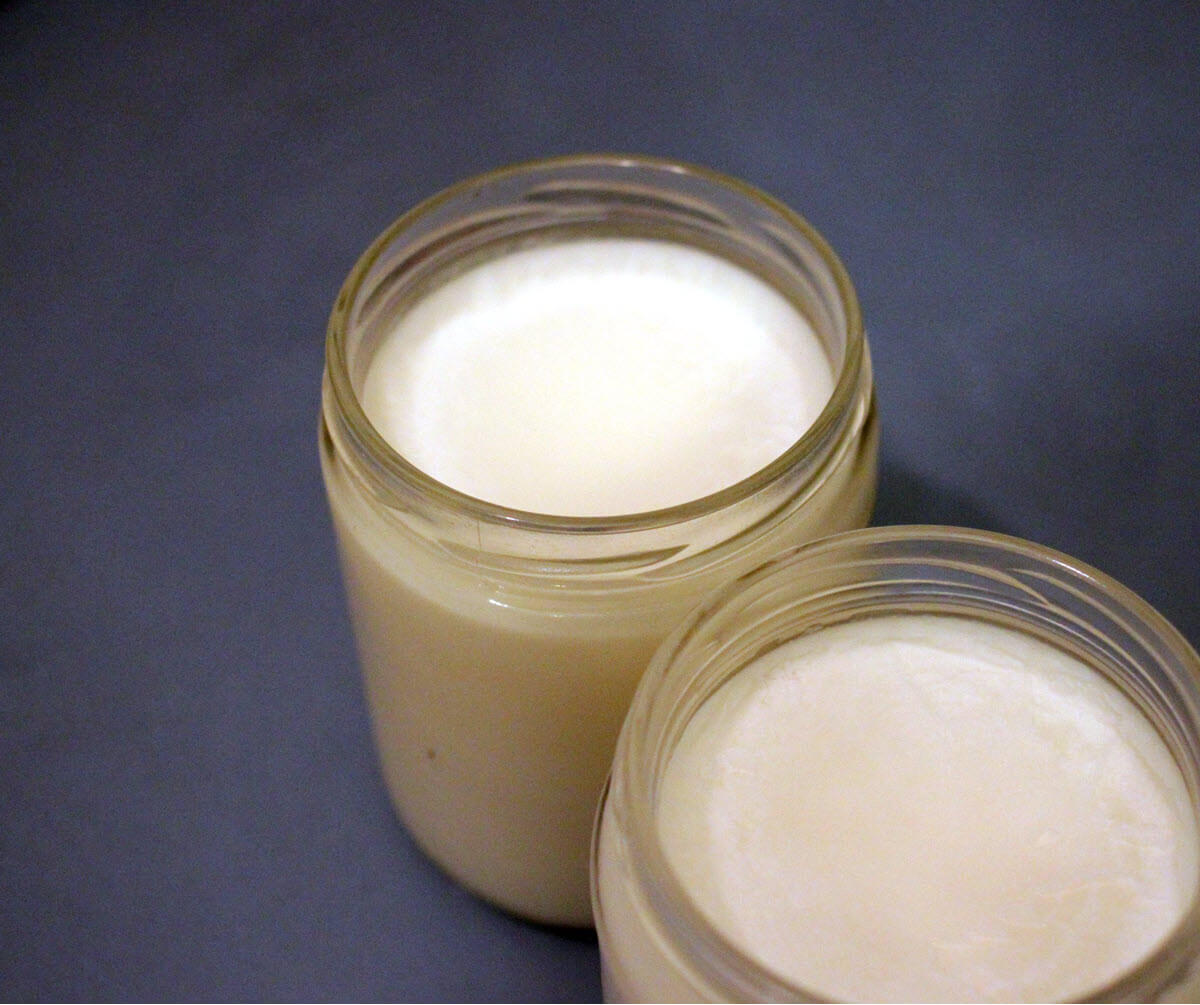
Frying fish in animal fat might seem weird, but lard is excellent for high heat cooking. With an almost neutral taste and long shelf life, you can definitely add it to your list of frying oils.
Lard’s smoke point is around 370°F, which makes it better suited for shallow frying.
Smoke point: 370°F (188 °C)
Best for: Pan frying and frying.
🐡 Best Fish For Deep Frying
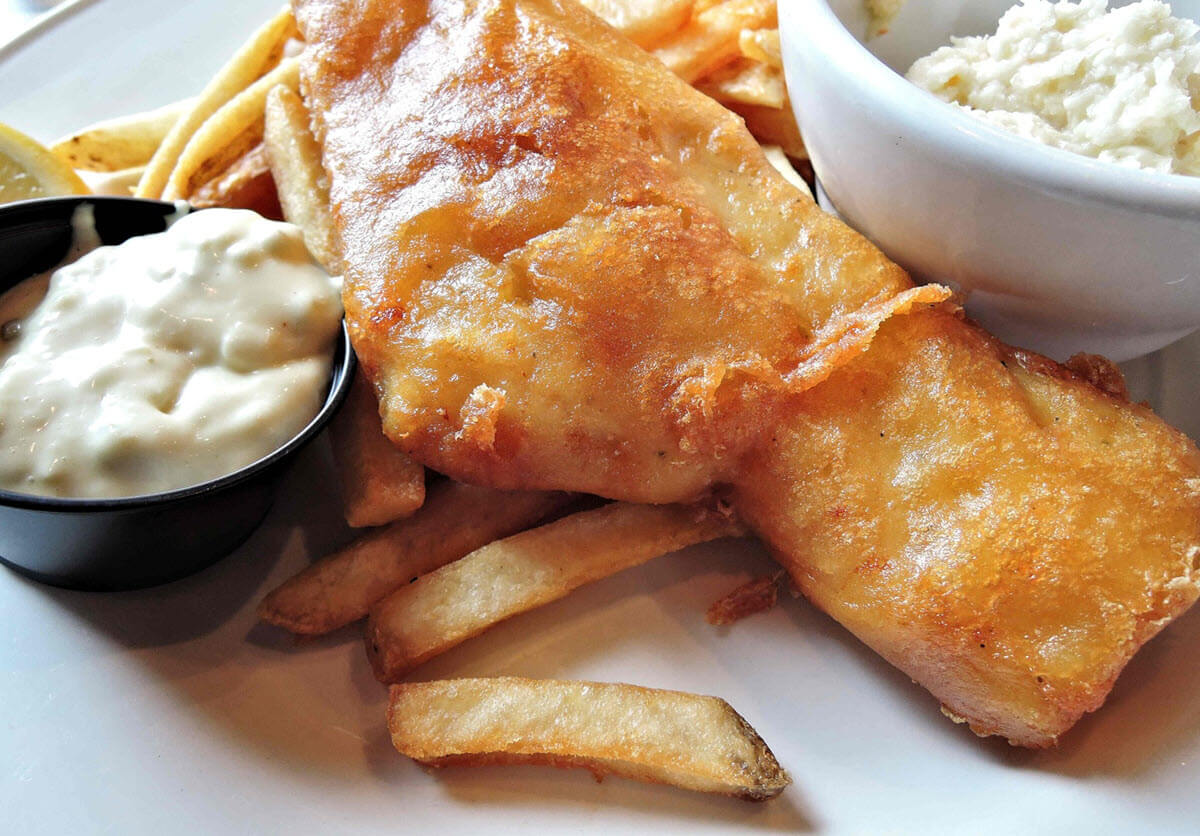
Some fish are better for frying than others, particularly those with milder flavors and low fat content.
Textured and fattier types of fish like salmon and tuna are not suitable for deep frying. Here are some of the best options:
- Tilapia
- Halibut
- Cod
- Trout
- Catfish
- Bass
- Perch
- Anchovies
🐠 What’s the Healthiest Oil For Frying Fish?
Let’s be honest, there’s nothing healthy about frying or deep-frying, but the oil you use can minimize the damage.
Some of the healthiest oils for frying fish include refined coconut oil (high in heat-stable saturated fats), light or refined olive oil, and refined avocado oil (high in monounsaturated fats).
These oils are not budget-friendly, though. If you’re looking for more cost-effective alternatives, consider using canola oil, vegetable oil, sunflower oil, or safflower oil for deep frying fish.
📌 Best Tips For Frying Fish
Getting that perfectly crispy fried fish without overdrying or causing it to break into pieces is totally doable! Here are some things you need to know to get the best results:
- Salt or brine the fish before frying. This will draw some moisture out of the flesh, allowing it to firm and hold its shape better when frying.
- Heat the oil until it reaches between 350-375°F before putting in the fish. If the oil isn’t hot enough, your fish can turn out very greasy.
- For both regular frying and deep frying cook small batches of fish. Overcrowding the pan or fryer will lower the oil temperature too much, which results in…you guessed it…greasy fish!
- Both sides should be golden brown and you should be able to easily flake apart the meat with a fork.
Related Seafood Recipes

Jason’s been firing up the grill for over 30 years after graduating from the US Coast Guard Academy. His love of finely-grilled steak and chicken led him to buy his first Weber grill to put on his apartment patio in 1992. Each military move led to a new grill (a mixture of gas and charcoal) until he fell in love with the Big Green Egg in 2008. Since then, he has added another 4 grills to the collection. Yes, he has a problem. Jason loves smoking in the ceramic BGE with exotic woods including olive wood from Egypt and hard to find varieties such as sassafras and orange wood. Jason takes the term “foodie” to a whole new level, jumping at the chance to take food tours and cooking classes during foreign travels. These have provided inspiration to incorporate new ideas into recipes when he gets back home. He has been featured in Fox News, Parade, Yahoo News, Kansas City Living and more. After retiring from the military and moving to southwest Florida, he has focused grilling and smoking locally sourced meats and fish (read: he likes to catch his own fish!)
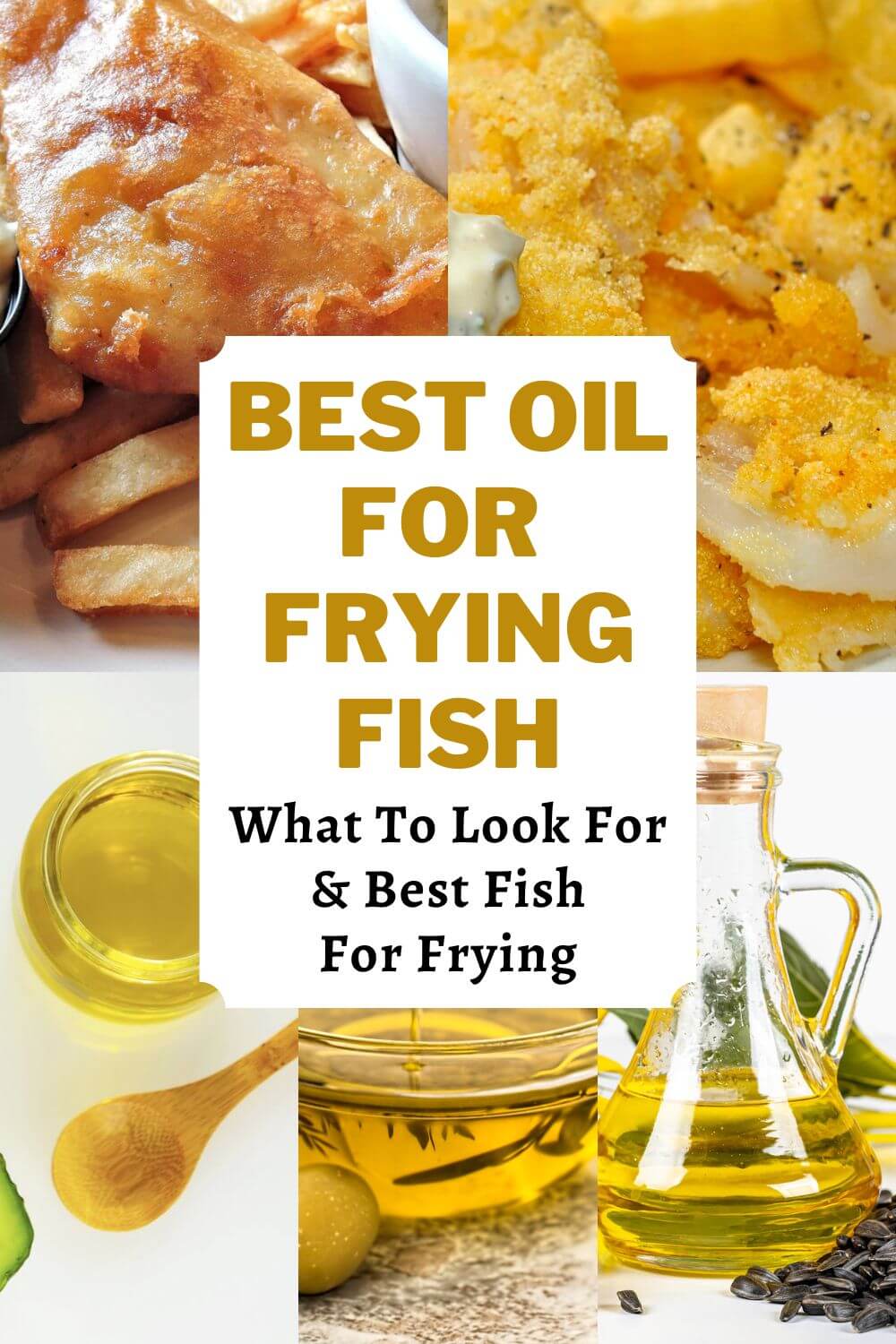
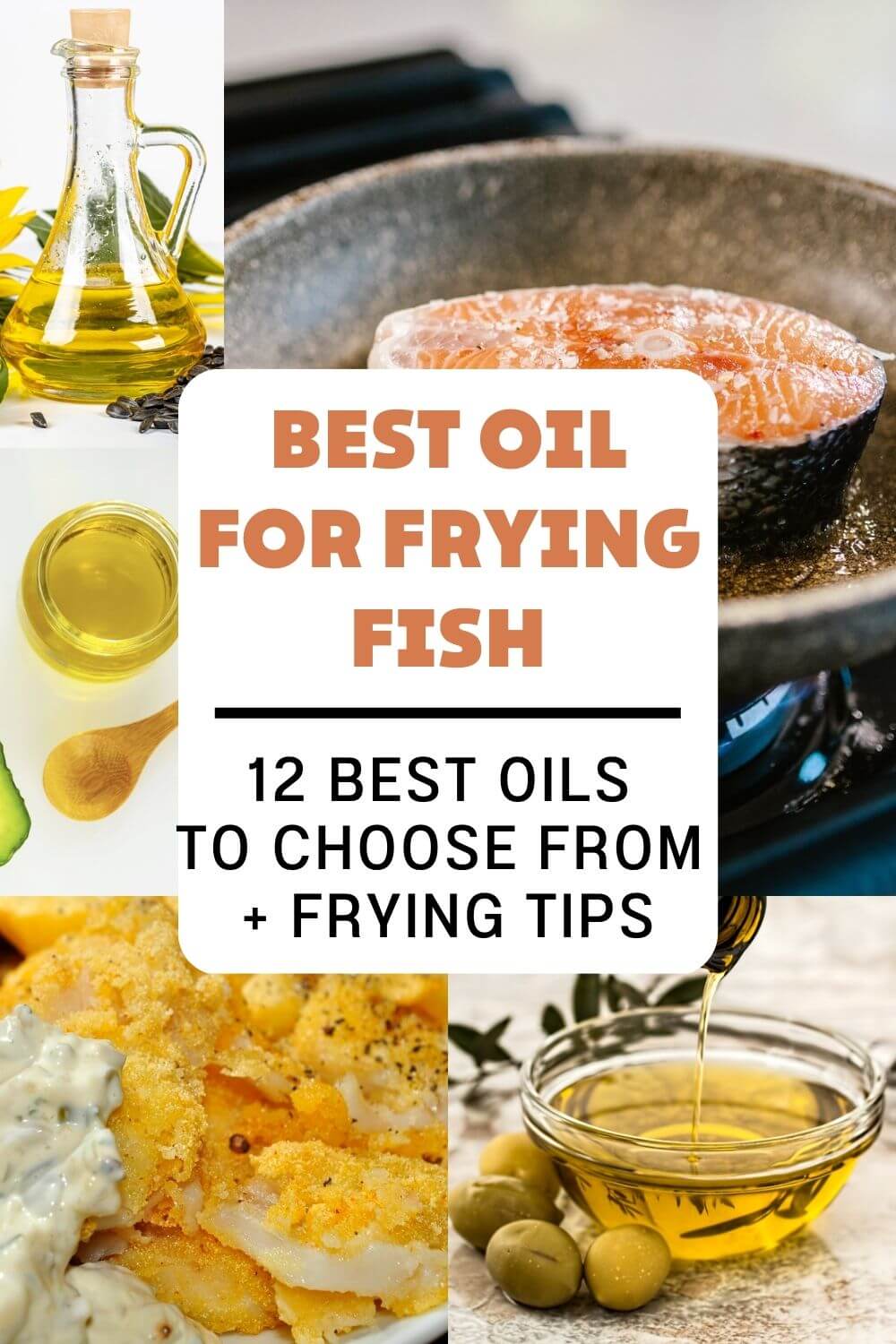



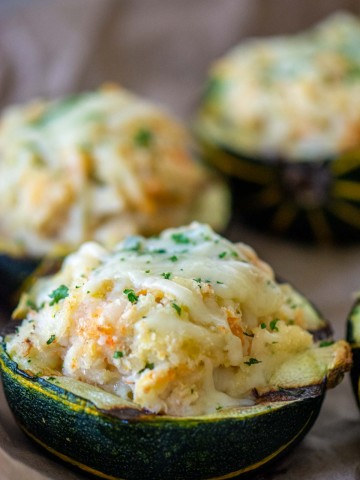
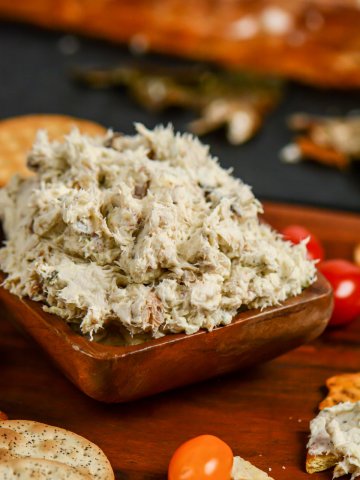
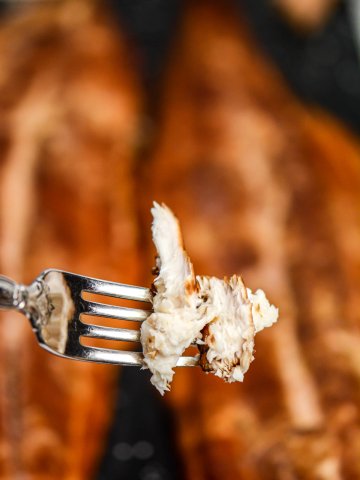
Leave a Reply